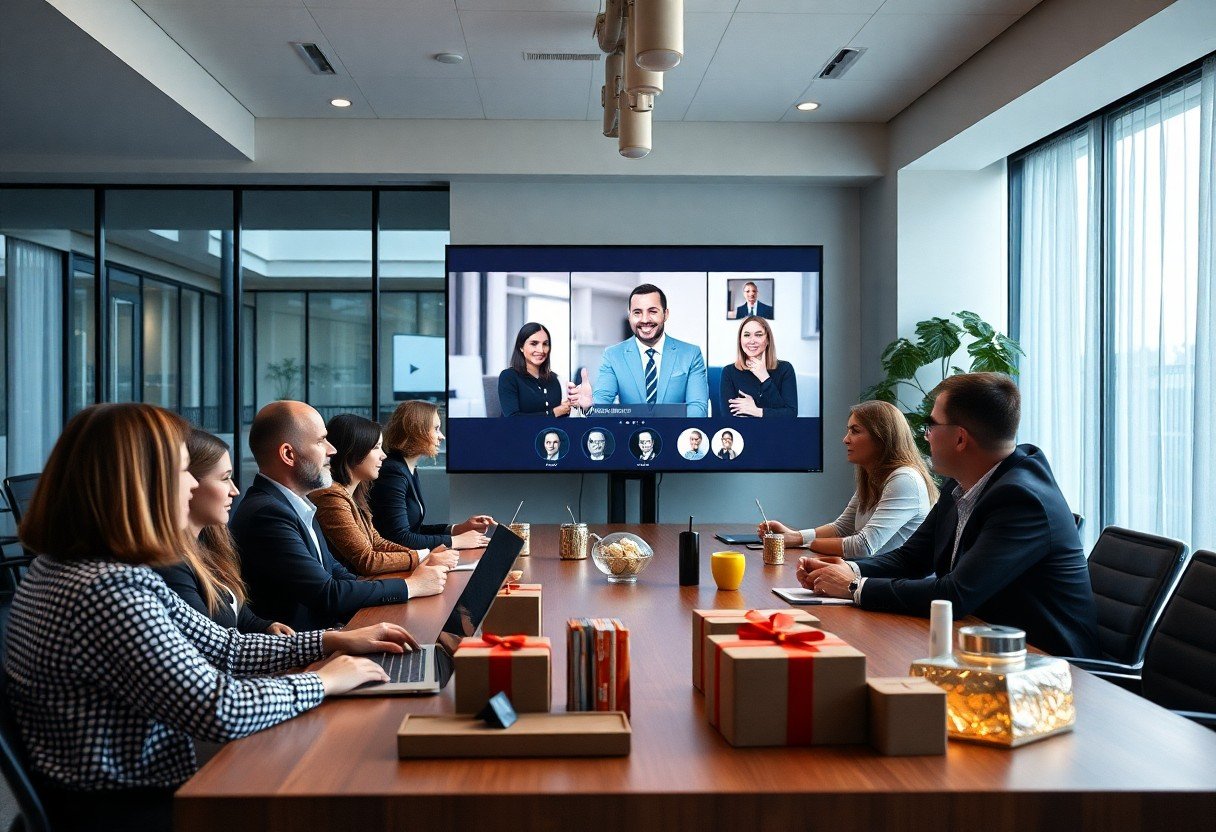There’s a reason why top-performing businesses consistently use webinars to sell their premium offerings: they work. When you’re aiming to close high-ticket sales, you need more than just a compelling pitch – you need to build trust, demonstrate value, and overcome objections in real-time. Webinars give you the perfect platform to accomplish all these objectives while reaching multiple qualified prospects simultaneously. By mastering the art of webinar sales, you can transform your conversion rates and significantly boost your revenue through strategic, value-driven presentations.

Key Takeaways:
- Value-First Approach – Dedicate 80% of your webinar to delivering actionable content and limit sales pitch to 20%, building trust and establishing expertise before presenting your offer
- Interactive Elements – Incorporate polls, Q&A sessions, and live demonstrations to boost engagement and gather real-time feedback from potential buyers
- Follow-up Strategy – Implement a systematic follow-up sequence within 24-48 hours after the webinar, including personalized emails and booking calls with qualified leads
- Social Proof – Feature client success stories, testimonials, and concrete results throughout the presentation to validate your high-ticket offering
- Scarcity Triggers – Create authentic urgency through time-sensitive bonuses, limited spots, or exclusive webinar-only pricing to encourage immediate action
Webinar Foundation Elements
A successful high-ticket sales webinar requires careful planning and strategic implementation of key foundational elements. Your webinar structure needs to incorporate proven elements such as compelling storytelling, clear value propositions, and strategic call-to-actions that guide participants toward your high-ticket offer. Research shows that 73% of B2B marketers and sales leaders say webinars are the best way to generate high-quality leads.
Quick recommendation: Our blog is filled with useful tips to help you succeed. If you are seeking a more comprehensive training program, we recommend the 72 Hour Challenge.
High-Ticket Sales Psychology
Webinar presentations targeting high-ticket sales must tap into specific psychological triggers that motivate premium purchasing decisions. Your content should address pain points while demonstrating how your solution provides exceptional value, as studies indicate that 76% of buyers are more likely to make significant purchases when they perceive unique benefits. You’ll need to establish authority, build trust, and create a sense of exclusivity throughout your presentation.
Platform Selection and Setup
Before launching your high-ticket webinar, you’ll need to select the right platform that aligns with your sales objectives and audience expectations. Your choice should factor in features like HD video quality, interactive tools, and reliable analytics, as 65% of attendees say technical quality impacts their buying decisions. Consider platforms that offer engagement features such as polls, chat functions, and breakout rooms to enhance participant interaction.
Understanding your platform’s capabilities allows you to maximize its features for your sales presentation. Your technical setup should include backup plans for potential issues, proper lighting, professional audio equipment, and a distraction-free background. Statistics show that webinars with professional production quality achieve 32% higher conversion rates than those with basic setups.
Content Structure Creation
There’s a proven formula behind every successful high-ticket sales webinar, and mastering this structure can increase your conversion rates by up to 40%. Your content needs to follow a strategic flow that builds trust, demonstrates expertise, and leads naturally to your offer. The key components include an engaging opening hook, compelling value propositions, and strategically placed calls to action that guide your audience toward the purchase decision.
Opening Hook Development
Among the most effective ways to capture your audience’s attention in the first 90 seconds is through a powerful opening hook that addresses their pain points directly. You can achieve this by sharing a relevant case study, presenting a surprising statistic, or telling a compelling story that resonates with your target audience. Research shows that webinars that start with a strong emotional hook retain 23% more viewers throughout the presentation.
Value Proposition Placement
Above all else, your webinar must clearly communicate the unique value you’re offering to your prospects. Position your key value propositions strategically throughout your presentation, with the most impactful points placed at the 15-minute and 45-minute marks, when audience engagement typically peaks. Studies indicate that webinars featuring three to five clear value propositions experience conversion rates 35% higher than those with less structured approaches.
At each strategic point in your webinar, reinforce your value proposition by connecting it directly to your audience’s specific challenges and desired outcomes. This approach helps you maintain engagement while building a compelling case for your high-ticket offer, as evidenced by data showing that 64% of viewers are more likely to purchase when they can clearly see how your solution addresses their specific needs.
Audience Engagement Tactics
Despite having premium content and a polished presentation, your webinar’s success hinges on maintaining active audience participation throughout the session. Research shows that webinars with high engagement rates convert up to 40% better than those with passive audiences. When you keep your attendees involved, they’re more likely to stay until your closing pitch and respond positively to your high-ticket offer.
Interactive Elements
Engagement tools like polls, surveys, and quick quizzes can transform your webinar from a one-way presentation into an interactive experience. You can boost participation by incorporating these elements every 8-10 minutes, which helps maintain attention spans and creates valuable touchpoints with your audience. By gathering real-time feedback through these tools, you can also adjust your presentation flow to better address your attendees’ specific needs and concerns.
Question Management
On average, webinars that effectively manage audience questions see a 35% higher conversion rate compared to those that don’t prioritize Q&A sessions. You should encourage questions throughout your presentation rather than waiting until the end, as this helps maintain engagement and allows you to address objections in real-time. Using a moderator to filter and organize questions can help you maintain a smooth flow while ensuring all relevant inquiries are addressed.
In fact, implementing a structured question management system can significantly enhance your webinar’s effectiveness. Consider dedicating specific segments for addressing common concerns, and use audience questions to naturally transition into your high-ticket offer. This approach not only demonstrates your expertise but also builds trust by showing that you’re genuinely interested in solving your audience’s problems.
Quick recommendation: Our blog is filled with useful tips to help you succeed. If you are seeking a more comprehensive training program, we recommend the 72 Hour Challenge.
Sales Presentation Framework
Not having a clear structure for your webinar presentation can derail even the most compelling offer. Your framework needs to guide attendees through a logical progression that builds value and creates desire for your solution. You’ll want to dedicate about 60% of your webinar time to valuable content, 20% to your story and credibility, and 20% to your offer and call-to-action.
Problem-Solution Method
The most effective way to structure your webinar content is through the problem-solution method, where you first highlight the specific challenges your audience faces. You’ll want to spend time articulating these pain points in detail, using real examples and statistics to show you understand their situation. Research shows that 73% of B2B buyers are more likely to engage with vendors who demonstrate a clear understanding of their specific business challenges.
Price Positioning Strategy
By positioning your high-ticket offer effectively, you can help attendees understand the true value of your solution relative to their current situation. You’ll want to present your pricing in the context of the cost of inaction or alternative solutions, helping prospects see how your offer, despite the higher price point, represents the best path forward.
Price anchoring techniques can significantly impact how your offer is perceived. When you present multiple pricing tiers or compare your solution’s cost to the potential return on investment, you create a framework that makes your high-ticket offer appear more reasonable. Studies indicate that webinars with strategic price positioning achieve conversion rates up to 20% higher than those without clear value justification.
Follow-up Systems
Now that you’ve delivered your high-value webinar content, implementing an effective follow-up system becomes the key to converting attendees into high-ticket clients. Research shows that 80% of sales require at least five follow-ups, yet only 10% of salespeople make more than three attempts to contact a prospect. Your follow-up system needs to be automated, personalized, and designed to maintain engagement while moving prospects through your sales funnel.
Lead Capture Methods
To maximize your webinar’s effectiveness, you need to implement strategic lead capture methods before, during, and after your presentation. Start by creating compelling registration forms that collect crucial information while offering value in return. During the webinar, use interactive elements like polls, surveys, and Q&A sessions to gather additional data about your attendees’ needs and pain points – this information will prove invaluable for your follow-up strategy.
Post-Webinar Nurturing
Follow-up begins immediately after your webinar ends, with a well-crafted email sequence that provides additional value and maintains momentum. Your sequence should include the webinar replay, supplementary resources, case studies, and clear calls-to-action for booking discovery calls. Data shows that leads contacted within the first hour after a webinar are 7 times more likely to convert into qualified sales opportunities.
Nurturing your webinar leads requires a multi-channel approach combining email marketing, retargeting ads, and personalized outreach. You can segment your audience based on their engagement levels during the webinar and tailor your follow-up content accordingly. For instance, attendees who asked questions or participated in polls should receive more targeted communications addressing their specific interests and concerns.
Technical Execution
Once again, your webinar’s technical performance can make or break your high-ticket sales success. Research shows that 67% of attendees cite technical issues as the primary reason for leaving a webinar early. To prevent this, you’ll need to invest in reliable webinar software that can handle your expected audience size, integrate with your existing tools, and provide important features like chat functionality, polls, and screen sharing capabilities.
Production Quality Standards
By maintaining high production standards, you’ll establish credibility and keep your audience engaged throughout the presentation. Your setup should include professional lighting, a high-quality microphone (preferably USB or XLR), and a stable internet connection with at least 10Mbps upload speed. Studies indicate that webinars with professional audio-visual quality achieve 32% higher engagement rates and a 25% increase in conversion rates.
Backup Plans and Support
Between technical glitches and unexpected interruptions, having robust backup plans can save your webinar from derailing. You should always have a secondary internet connection ready, backup slides stored locally, and a co-host who can take over if needed. Statistics show that webinars with dedicated technical support staff experience 45% fewer disruptions and maintain higher attendee retention rates.
For instance, you can set up a mobile hotspot as your backup internet connection, prepare pre-recorded segments for high-risk portions of your presentation, and establish a clear communication channel with your support team. Your technical support staff should be ready to assist attendees with login issues, audio problems, or any other technical challenges that might arise during the webinar.
Final Words
Presently, you can harness the power of webinars to transform your high-ticket sales process and create a sustainable pipeline of qualified leads. By implementing the strategies outlined above – from crafting compelling content to perfecting your follow-up sequence – you’ll position yourself as an authority while building the trust necessary to close premium deals. Your success in webinar sales hinges on your ability to deliver genuine value while strategically guiding prospects toward your high-ticket offerings.
Your webinar strategy should evolve based on audience feedback and performance metrics, allowing you to refine your approach continuously. As you master these techniques, you’ll find that webinars become not just a sales tool, but a cornerstone of your business growth strategy. By focusing on solving real problems and maintaining authentic connections with your audience, you’ll create a reliable system for converting prospects into high-value clients through the power of webinar presentations.
Quick recommendation: Our blog is filled with useful tips to help you succeed. If you are seeking a more comprehensive training program, we recommend the 72 Hour Challenge.

